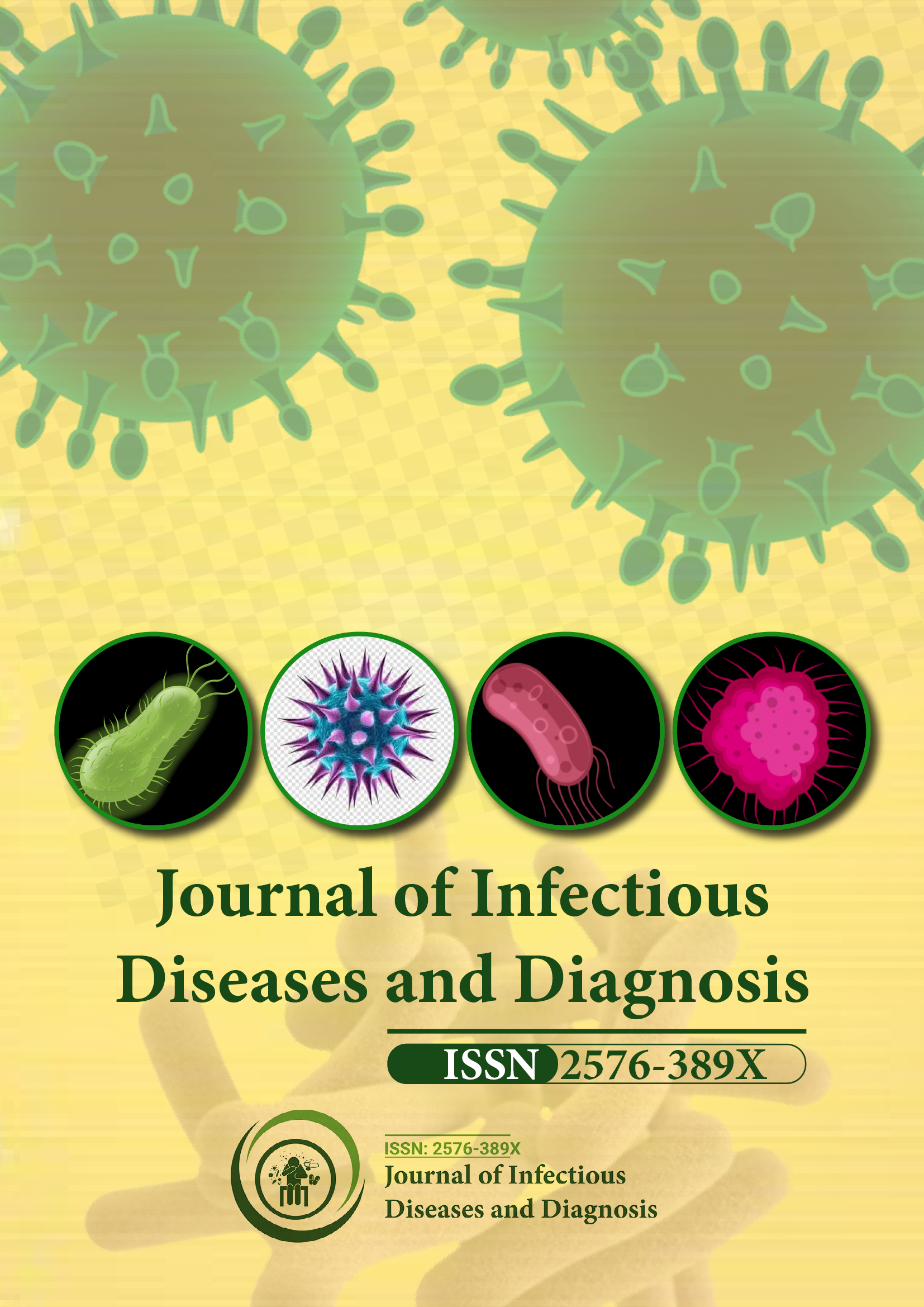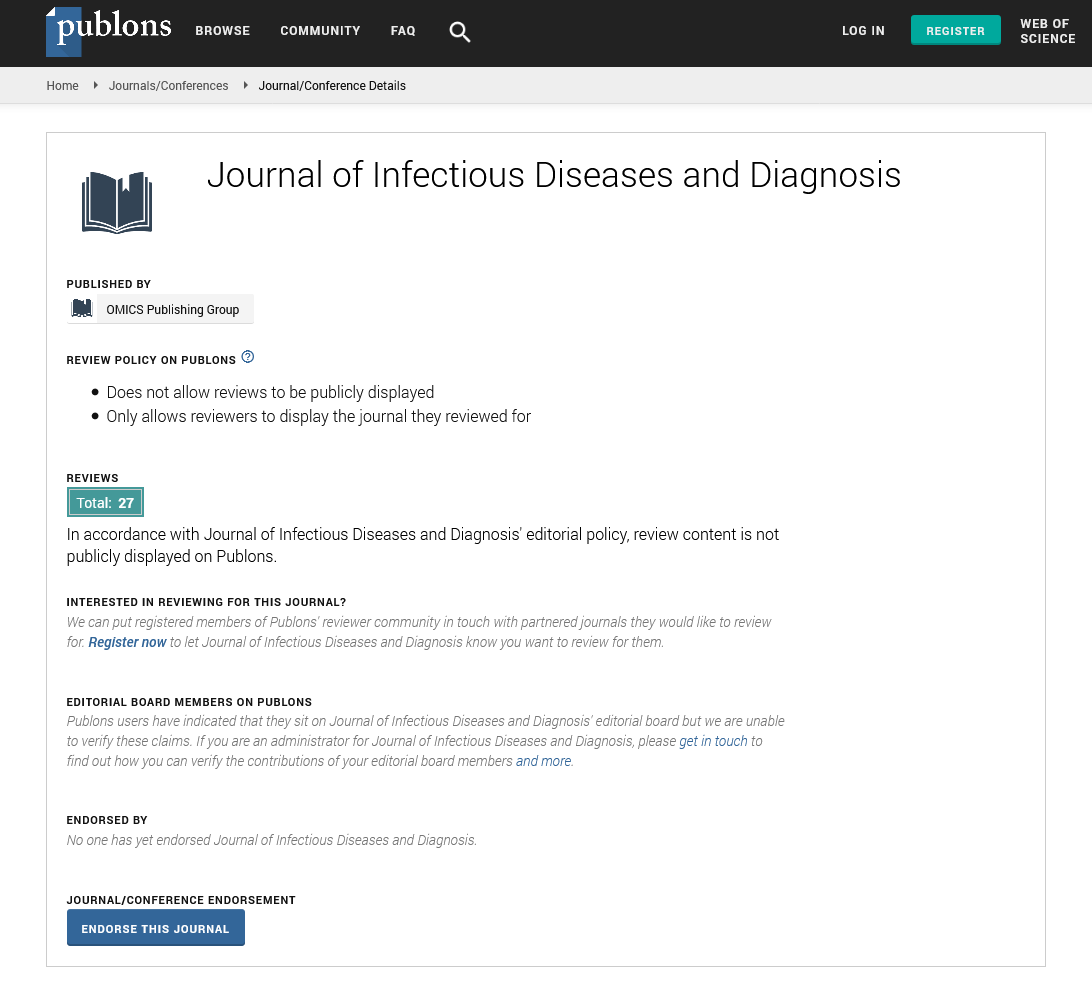Indexed In
- RefSeek
- Hamdard University
- EBSCO A-Z
- Publons
- Euro Pub
- Google Scholar
Useful Links
Share This Page
Journal Flyer

Open Access Journals
- Agri and Aquaculture
- Biochemistry
- Bioinformatics & Systems Biology
- Business & Management
- Chemistry
- Clinical Sciences
- Engineering
- Food & Nutrition
- General Science
- Genetics & Molecular Biology
- Immunology & Microbiology
- Medical Sciences
- Neuroscience & Psychology
- Nursing & Health Care
- Pharmaceutical Sciences
Commentary - (2025) Volume 10, Issue 3
Evaluating the Diagnostic Performance of AI-Assisted Chest X-Rays in Detecting Pulmonary Tuberculosis
Evelyn Max*Received: 30-Apr-2025, Manuscript No. JIDD-25-29295; Editor assigned: 02-May-2025, Pre QC No. JIDD-25-29295 (PQ); Reviewed: 16-May-2025, QC No. JIDD-25-29295; Revised: 23-May-2025, Manuscript No. JIDD-25-29295 (R); Published: 30-May-2025, DOI: 10.35248/2576-389X.25.10.330
Description
Pulmonary tuberculosis remains a leading infectious cause of death worldwide, especially in regions with limited access to timely and accurate diagnostics. Conventional diagnostic methods, such as sputum microscopy and GeneXpert MTB/RIF, have limitations in terms of sensitivity, infrastructure requirements and patient compliance. Chest radiography has long served as a useful screening tool due to its widespread availability and non-invasive nature. However, its diagnostic reliability is often hampered by variability in interpretation, especially in settings with a shortage of experienced radiologists. With recent advances in artificial intelligence, several AI-based tools have been developed to analyze chest X-rays and assist in the detection of tuberculosis-related abnormalities.
This study was conducted to assess the diagnostic performance of three commercially available AI models in detecting pulmonary tuberculosis on chest radiographs. A total of 1,100 patients from four urban clinics and two district hospitals with presumptive symptoms of tuberculosis were enrolled. Each participant underwent a chest X-ray and a sputum GeneXpert test, which was used as the reference standard. The digital radiographs were analyzed using three AI systems, all of which had been trained on large annotated datasets and were designed to detect pulmonary opacities, cavitation and other features suggestive of tuberculosis.
The AI tools generated abnormality scores ranging from 0 to 100 for each image and a predefined threshold score was used to classify a case as suggestive of tuberculosis. The primary metrics evaluated were sensitivity, specificity, positive predictive value and negative predictive value for each AI model compared to GeneXpert results.
Out of the 1,100 participants, 362 tested positive for tuberculosis using GeneXpert. The first AI tool identified 335 of these cases, resulting in a sensitivity of 92.5% and a specificity of 81.4%. The second model yielded slightly higher sensitivity at 94.1% but had lower specificity at 78.7%. The third system offered a balanced performance, with sensitivity and specificity values of 90.3% and 85.6%, respectively.
False-positive findings were primarily seen in cases of healed negatives occurred mostly in early disease stages with minimal radiographic changes or in cases with HIV co-infection, where atypical presentations are more common. Among the models, the third system had the lowest false-positive rate, attributed to its refined image pre-processing and emphasis on lesion distribution patterns.
Beyond accuracy, time efficiency was an important advantage. AI systems processed each image within seconds and batch analysis enabled rapid screening of entire outpatient cohorts. In contrast, manual interpretation by radiologists took an average of 6 to 10 minutes per case and not all facilities had radiologists available fulltime. The AI tools also maintained consistent performance across different X-ray machines and image formats, supporting their adaptability in low-resource environments.
The study also examined the potential role of AI in triage and referral systems. In settings where GeneXpert or sputum testing was limited, AI-assisted X-ray interpretation helped prioritize highrisk patients for confirmatory testing. This optimized resource allocation and reduced diagnostic delays, particularly in highburden clinics. In one district hospital, the implementation of AI screening reduced the average time to treatment initiation by two days compared to the standard workflow.
Feedback from clinicians using AI support was largely positive. Many noted increased confidence in decision-making, especially when no radiologist was available. While AI was not used as a standalone diagnostic method, its application as a decision-support tool significantly improved the case detection rate. Health workers found the interface intuitive and minimal training was needed to operate the systems effectively.
Despite promising results, some limitations were noted. The performance of AI tools varied slightly depending on patient demographics and comorbidities. Image quality, especially underexposure and motion blur, affected the accuracy of some predictions. The reliance on a single threshold score for all settings may not capture the nuances of local epidemiology and customizable thresholds could be explored in future versions. Furthermore, although the AI systems provided visual heat maps indicating areas of concern, they could not distinguish tuberculosis, nonspecific pneumonias and fibrotic changes. False between active and inactive disease. This underscores the need for clinical correlation and additional microbiological confirmation. Integration of AI tools into existing diagnostic algorithms should be approached with clear protocols and oversight.
The cost of implementation remains a factor for wider adoption. While the software was compatible with existing digital radiography infrastructure, license fees and cloud storage costs could limit access in smaller facilities. However, when weighed against the potential reduction in missed cases and improved triage efficiency, the overall value appears favorable.
In conclusion, this study highlights the value of AI-assisted chest X-rays as an effective diagnostic aid in detecting pulmonary tuberculosis. The evaluated AI models demonstrated high sensitivity and acceptable specificity, with rapid turnaround and consistent performance across varied settings. By reducing interpretation variability and supporting clinical decisions, these tools can enhance early detection, especially in areas with limited access to radiology expertise. While not a replacement for confirmatory tests, AI can play a meaningful role in tuberculosis control programs by improving screening accuracy and optimizing resource use. Continued evaluation, context-specific adaptation and integration with clinical workflows will help maximize the potential of these technologies in real-world practice.
Citation: Max E (2025). Evaluating the Diagnostic Performance of AI-Assisted Chest X-Rays in Detecting Pulmonary Tuberculosis. J Infect Dis Diagn. 10:330.
Copyright: © 2025 Max E. This is an open-access article distributed under the terms of the Creative Commons Attribution License, which permits unrestricted use, distribution, and reproduction in any medium, provided the original author and source are credited.

